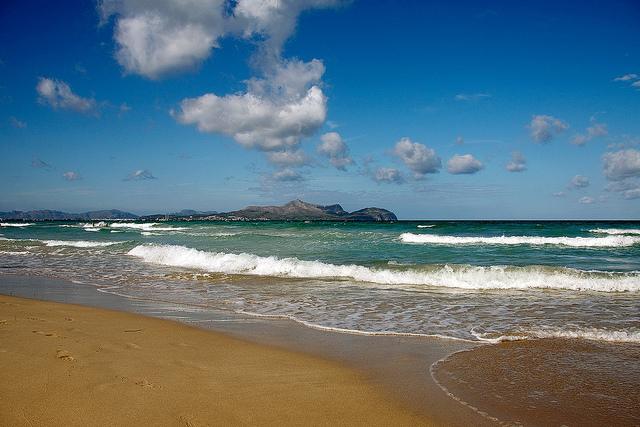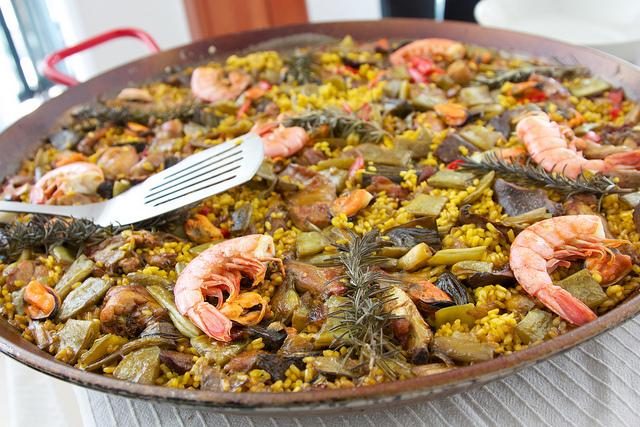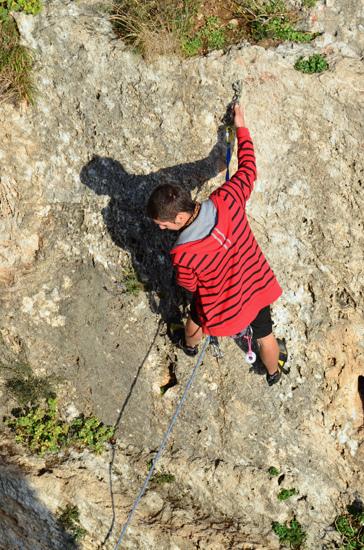About Spain
With a surface area of 505,990 km2, located in the southwest of Europe, and bordering France and Portugal, Spain is home to nearly 47 million (2012) people and is the second largest country of the EU. Besides the mainland, the Spanish territory encompasses the Iberian Peninsula, the Balearic Islands, the Canary Islands, Ceuta and Melilla in North Africa as well as several peñónes (offshore island forts) at the Moroccan coast. Spain is a parliamentary constitutional monarchy, divided into 17 autonomous regions that are culturally as diverse and fascinating as the country’s landscapes ranging from snow-capped mountains to green valleys, deep forests, barren plains and golden beaches. These in particular, attract millions of visitors every year, but Spain offers much more than just beautiful shores.
The North of Spain is characterised by a continental climate with hot summers and cold winters, although the regions bordering or in close proximity to the Atlantic Ocean (Galicia, Asturias, Cantabria, Basque Country and Navarra) experience a more maritime climate with cool summers and mild winters – and with plenty of rain, which is why this part of Spain is also called "Green Spain". Lush pastures, dense forests, rolling hills and wide valleys with picturesque villages at the foot of high mountain ranges make Northern Spain a true nature paradise and the perfect holiday destination for all outdoor lovers. A great way of exploring España Verde is by hiking or cycling along the Camino de Santiago – this famous pilgrimage route takes you through the most amazing landscapes of Northern Spain and you will stop over in historic cities like León and Burgos before reaching Santiago de Compostela in the northwestern Galicia, where you will relax on some of the country’s finest beaches.
The capital city Madrid is not only the political, economic and cultural centre of Spain but also the geographical one. Colourful, vivid and passionate – this metropolis sweeps away its visitors with its typical Spanish temperament. Fine arts, fine dining, superb shopping possibilities and a vibrant nightlife – all you could wish for a varied city holiday, you will definitely find it here. Together with its surrounding regions Castilla y León and Castilla-La Mancha and even Extremadura, Madrid lies in the Meseta Central, a highland plateau with several mountain ranges. The plateau covers a vast proportion of the country and although these plains are quite arid, some of the best Spanish wines are produced here.
Mainland Spain’s Mediterranean coastline extends over more than 1,600 kilometres, from Catalonia in the northeast down to Andalusia in the very south. With such illustrious names as Costa del Sol, Costa Blanca and Costa de la Luz, the Spanish seaside resorts like Marbella attract every year masses of sun seeking holidaymakers, who, very often, pay only little attention to this region’s beautiful cities and their outstanding cultural heritage. For more than 700 years, almost the entire country was under Muslim rule and this influence is especially evident in the architecture of the south, which was the heartland of al-Andalus. The Alhambra of Granada, the Giralda of Seville and the Mosque-Cathedral of Cordoba are masterpieces of Moorish architecture. In Barcelona, however, you won’t find anything similar, because Spain’s second largest city formed part of Muslim Spain only for a short time. It is nonetheless a very artistic city with a truly cosmopolitan flair and one of pearls on the Spanish Mediterranean coast.
The Balearic and the Canary Islands are also very sought after holiday destinations in Spain. While the Balearic Islands are located in the Mediterranean, the Canaries lie southwest off the Moroccan coast. They consists of seven larger islands - Gran Canaria, Fuerteventura, Lanzarote, Tenerife, La Palma, La Gomera, El Hierro - and several other smaller ones. Volcanism and a subtropical climate have created landscapes and a flora and fauna that are unique in the world. In contrast, the climate of Mallorca, Menorca, Ibiza, Formentera and Cabrera is typically Mediterranean and their coasts are rather rocky with many picturesque inlets and hidden coves, whereas the Canaries’ beaches are long and sandy. Thanks to their favourable climates, rich nature and multi-faceted cultures, both archipelagos make wonderful year-round holiday destinations, just like the rest of Spain - an exciting country full of contrasts and rich in culture and traditions, shaped by millennia of history.
The North of Spain is characterised by a continental climate with hot summers and cold winters, although the regions bordering or in close proximity to the Atlantic Ocean (Galicia, Asturias, Cantabria, Basque Country and Navarra) experience a more maritime climate with cool summers and mild winters – and with plenty of rain, which is why this part of Spain is also called "Green Spain". Lush pastures, dense forests, rolling hills and wide valleys with picturesque villages at the foot of high mountain ranges make Northern Spain a true nature paradise and the perfect holiday destination for all outdoor lovers. A great way of exploring España Verde is by hiking or cycling along the Camino de Santiago – this famous pilgrimage route takes you through the most amazing landscapes of Northern Spain and you will stop over in historic cities like León and Burgos before reaching Santiago de Compostela in the northwestern Galicia, where you will relax on some of the country’s finest beaches.
The capital city Madrid is not only the political, economic and cultural centre of Spain but also the geographical one. Colourful, vivid and passionate – this metropolis sweeps away its visitors with its typical Spanish temperament. Fine arts, fine dining, superb shopping possibilities and a vibrant nightlife – all you could wish for a varied city holiday, you will definitely find it here. Together with its surrounding regions Castilla y León and Castilla-La Mancha and even Extremadura, Madrid lies in the Meseta Central, a highland plateau with several mountain ranges. The plateau covers a vast proportion of the country and although these plains are quite arid, some of the best Spanish wines are produced here.
Mainland Spain’s Mediterranean coastline extends over more than 1,600 kilometres, from Catalonia in the northeast down to Andalusia in the very south. With such illustrious names as Costa del Sol, Costa Blanca and Costa de la Luz, the Spanish seaside resorts like Marbella attract every year masses of sun seeking holidaymakers, who, very often, pay only little attention to this region’s beautiful cities and their outstanding cultural heritage. For more than 700 years, almost the entire country was under Muslim rule and this influence is especially evident in the architecture of the south, which was the heartland of al-Andalus. The Alhambra of Granada, the Giralda of Seville and the Mosque-Cathedral of Cordoba are masterpieces of Moorish architecture. In Barcelona, however, you won’t find anything similar, because Spain’s second largest city formed part of Muslim Spain only for a short time. It is nonetheless a very artistic city with a truly cosmopolitan flair and one of pearls on the Spanish Mediterranean coast.
The Balearic and the Canary Islands are also very sought after holiday destinations in Spain. While the Balearic Islands are located in the Mediterranean, the Canaries lie southwest off the Moroccan coast. They consists of seven larger islands - Gran Canaria, Fuerteventura, Lanzarote, Tenerife, La Palma, La Gomera, El Hierro - and several other smaller ones. Volcanism and a subtropical climate have created landscapes and a flora and fauna that are unique in the world. In contrast, the climate of Mallorca, Menorca, Ibiza, Formentera and Cabrera is typically Mediterranean and their coasts are rather rocky with many picturesque inlets and hidden coves, whereas the Canaries’ beaches are long and sandy. Thanks to their favourable climates, rich nature and multi-faceted cultures, both archipelagos make wonderful year-round holiday destinations, just like the rest of Spain - an exciting country full of contrasts and rich in culture and traditions, shaped by millennia of history.



